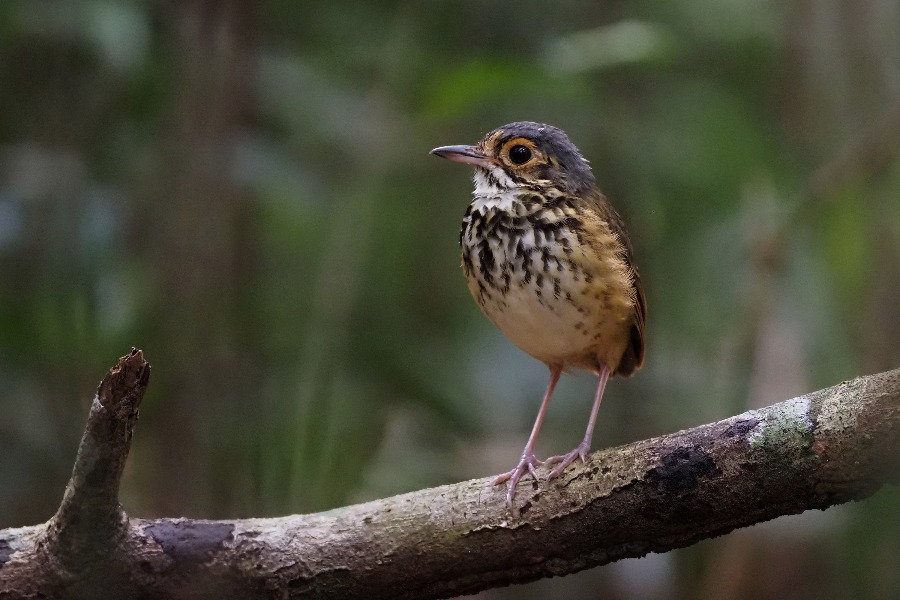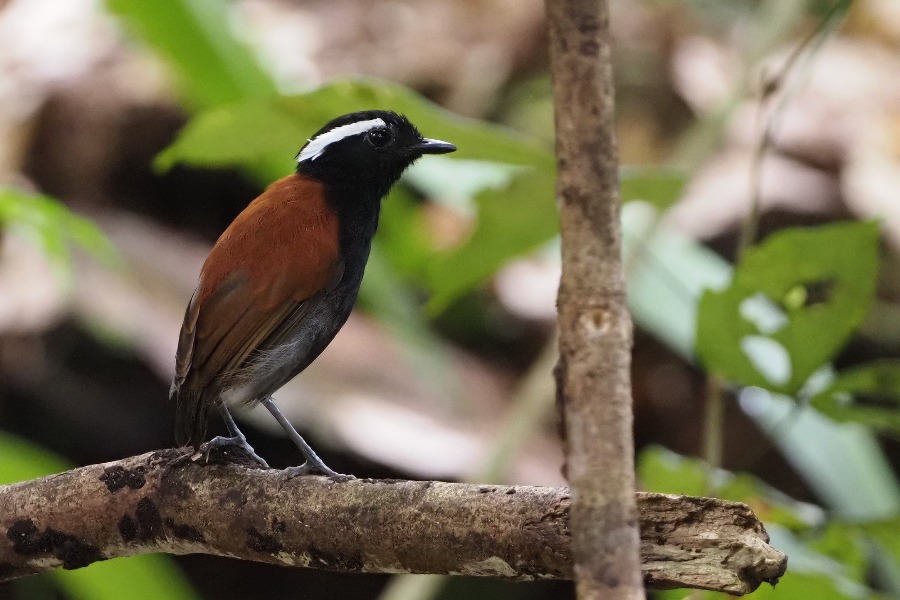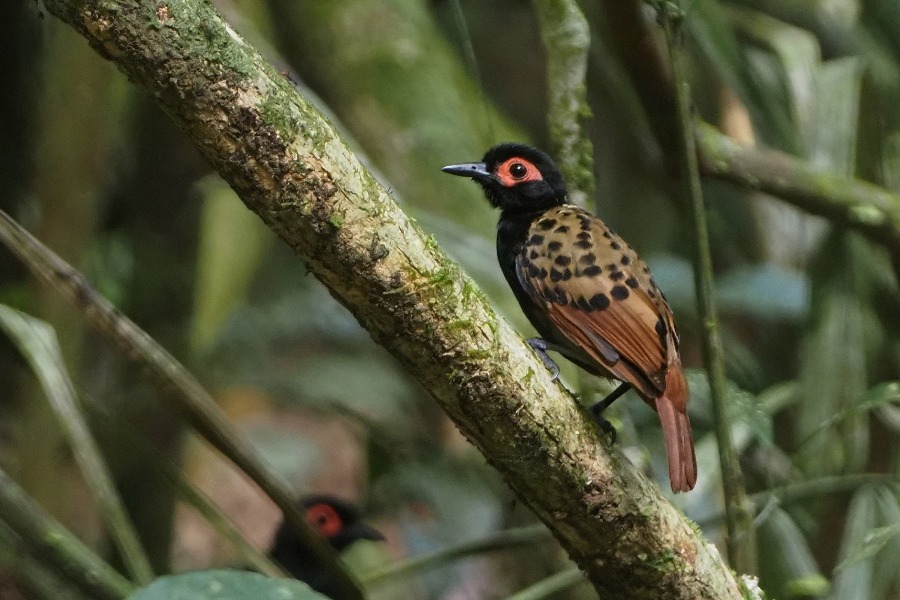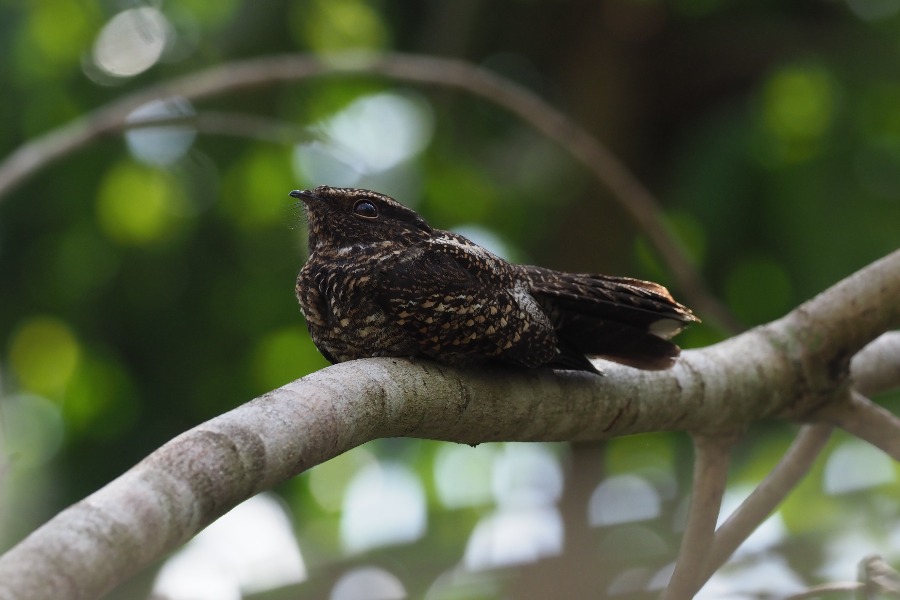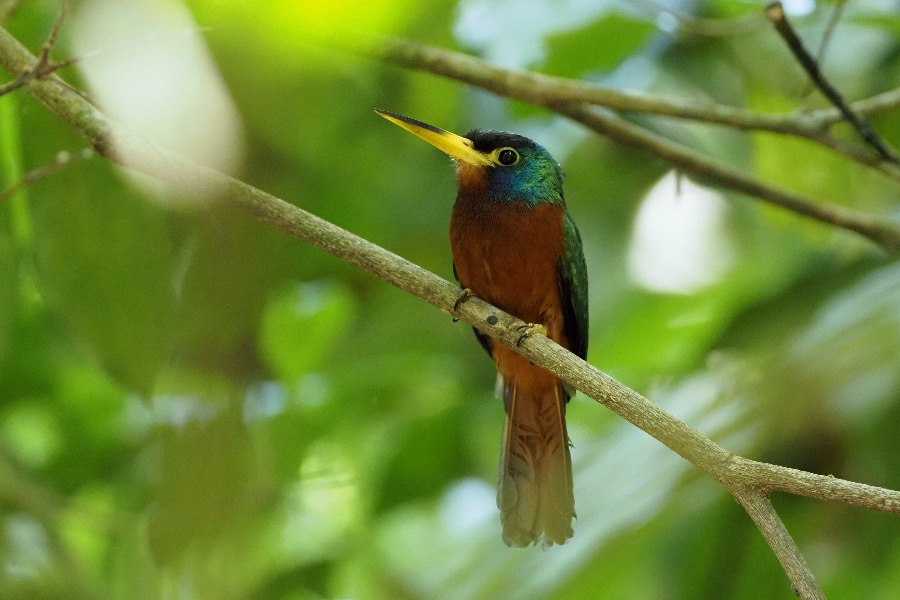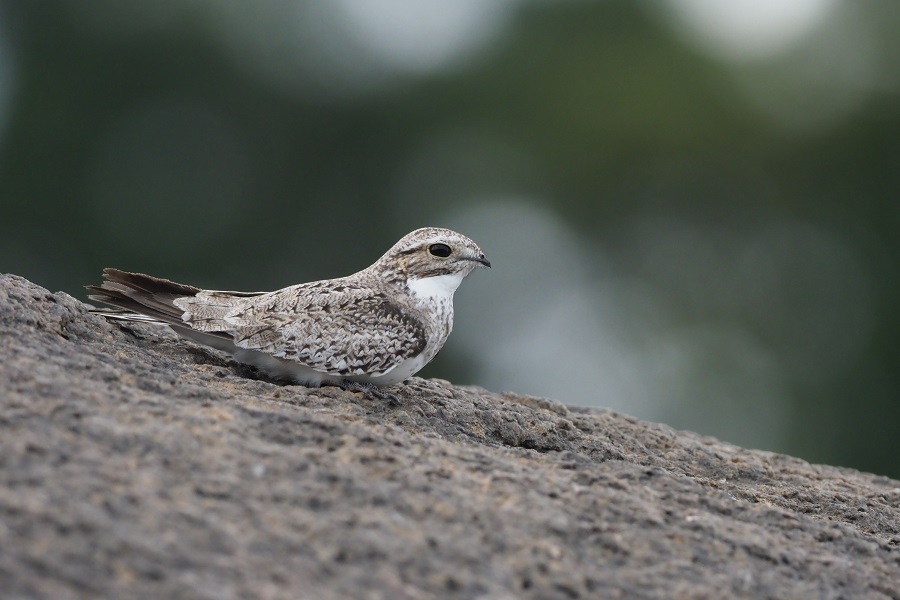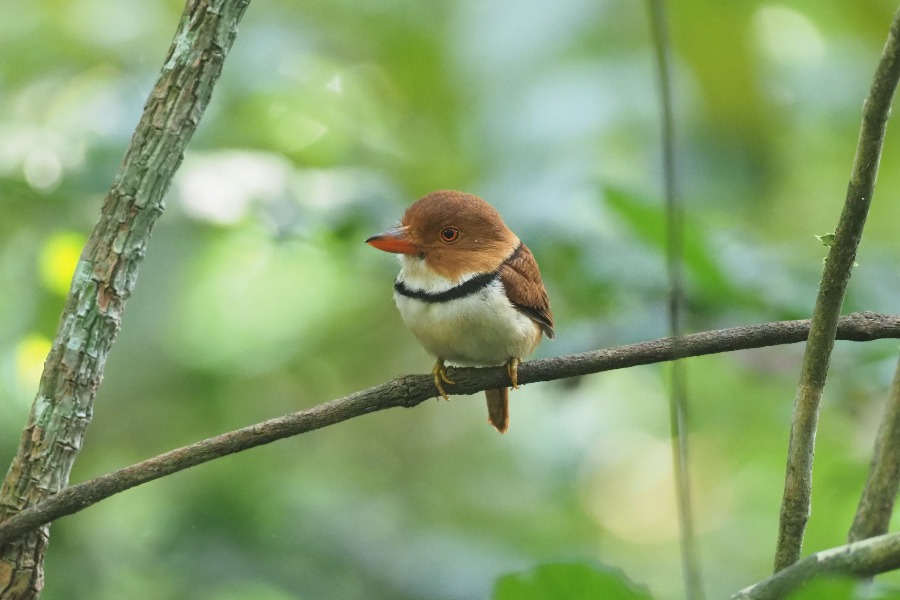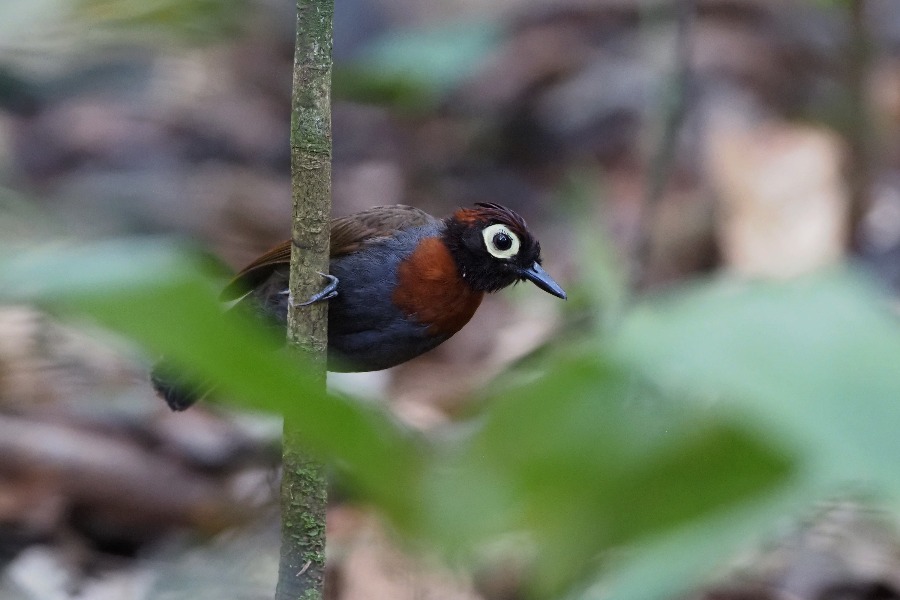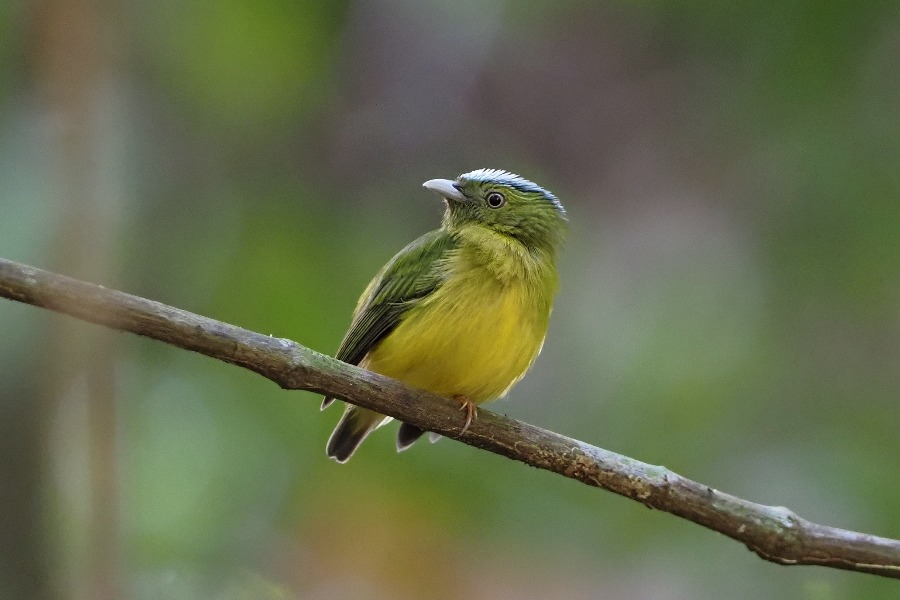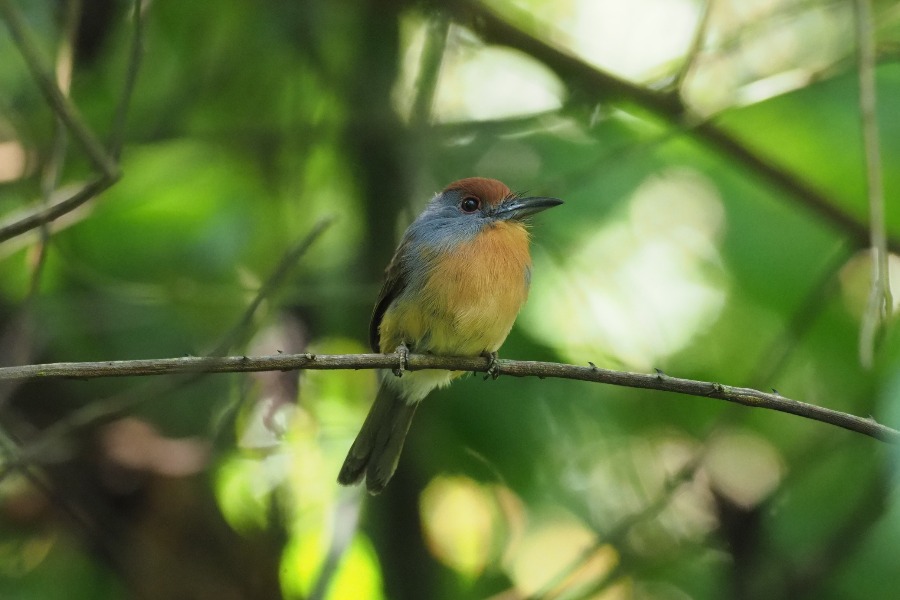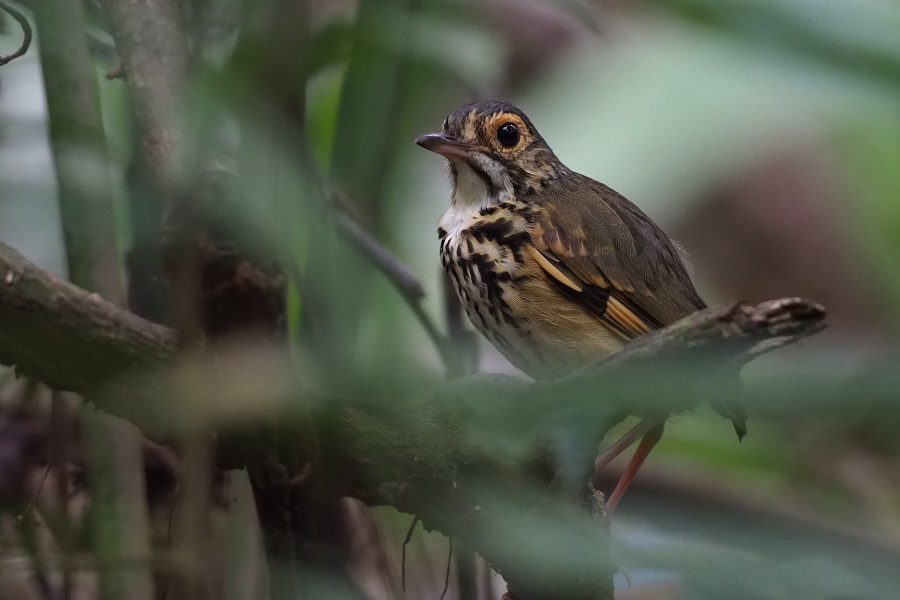Brazil: Eastern Amazonia
Newly-designed tour covering four different centres of Amazonian endemism: Rondonia, Tapajos, Xingu, and Belem. Expect around 40 Brazilian endemics and an additional 60 regional specialties within a trip list that will likely exceed 500 species! Highlights include Buff-browed and Chestnut-headed Chachalacas, White-crested Guan, Fiery-tailed Awlbill, Tapajos Hermit, Crimson Topaz, Dot-eared Coquette, Dark-winged Trumpeter, Brown-chested and Black-girdled Barbets, Vulturine Parrot, Hyacinth Macaw, Sulphur-breasted, Jandaya, Golden, Pearly, Crimson-bellied, and Santarem Parakeets, Willis's, Bare-eyed, Harlequin, and Wing-banded Antbirds, Snethlage's, Alta Floresta, and Tapajos Antpittas, Opal-crowned Manakin, Purple-breasted, White-tailed, and Guianan Red Cotingas, White Bellbird, and so many others.
Next Dates
15 July - 30 July 2026 (16 days)
Leaders:
Eduardo Patrial
Group Size Limit:
6
Single Room Supplement: $
500 USD
Deposit: $
750 USD
Price: $
8100 USD
Add a Title
Leaders:
Eduardo Patrial
Group Size Limit:
Add a Title
Single Room Supplement: $
TBD
Deposit: $
TBD
Price: $
TBD
Add a Title
Accommodation:
Comfortable hotels and guesthouses throughout.
Walking difficulty:
Easy and flat forest trails with roadside birding, though we will be covering lots of ground.
Tour cost includes:
All accommodation, main meals, drinking water, internal flights (as stated in itinerary), overland transport, tips to local drivers and guides, travel permits, entrance fees, and guide fees.
Tour cost excludes:
Flights before and after the tour start/end, visa, travel insurance, tips to tour leaders, laundry, drinks, and other items of a personal nature.
Day 1: Arrivals into Belém International Airport (BEL), the capital of Pará. If time permits, the hotel grounds will provide great looks at White-winged Parakeets and good chances for the endemic Buff-browed Chachalaca, plus Neotropical Palm and Short-tailed Swifts, Sulphury Flycatcher, Violaceous Euphonia, and a few others. Night in Belém.
Day 2: Morning birding at Gunma Ecological Reserve in the nearby town of Santa Barbára do Pará. Here, in a good portion of forest, we will be looking for interesting birds such as Crimson Topaz, the rare Dot-eared Coquette, the endemic Hooded Gnateater, range-restricted Willis’s Antbird, Amazonian Barred Woodcreeper (medius), Paradise Jacamar, Black-necked and Red-necked Aracaris, Southern Mealy Amazon, Dusky Parrot, East Amazonian Fire-eye, Black-spotted Bare-eye (paraensis), Silvered Antbird, Cinereous Mourner, White-browed Purpletuft, and Golden-sided Euphonia. In the afternoon, we should visit more protected forest near the large Guamá River in search of the rare Black-chested Tyrant, Pale-tailed Barbthroat, Spotted and White-necked Puffbirds, White-bellied Parrot, Band-tailed and Blue-backed Manakins, Purple-throated Fruitcrow, and others. Night in Belém.
Day 3: Early morning to revisit one of the above sites near Belém, or visit Utinga State Park near the town. Noon flight to Santarém and ferry (at 5pm) across the Amazon River to reach Monte Alegre (north bank) in the evening for a one-night stay in simple guesthouse. The two-hour ferry trip will give us chances to enjoy some beautiful varzea scenery, where we hope to spot Tucuxi Dolphin (Sotalia fluviatilis), Buff-necked Ibis, Horned Screamer, Lesser Yellow-headed Vulture, Savanna and Black-collared Hawks, Snail Kite, Pied Plover, Large-billed and Yellow-billed Terns, Ringed and Amazon Kingfishers, Short-tailed Parrot, the stunning Oriole Blackbird, Yellow-hooded Blackbird, Orange-fronted Yellow Finch, and possibly others.
Day 4: Most of the day in Monte Alegre mainly to find the localised endemic Sulphur-breasted Parakeet in tall Cerrado forest. Our time there should include the interesting Monte Alegre State Park and surroundings, where we also hope to find Little Chachalaca, endemic Ochre-backed Woodpecker, Green-rumped Parrotlet, Northern Slaty Antshrike, White-bellied and Dusky Antbirds, and possibly others. Ferry departing back to Santarém at 4pm. Night in Santarém.
Day 5: Early transfer and day to explore the fantastic Tapajós National Forest. Here, we will be looking especially for a few endemics between the Tapajos and Xingu rivers: the impressive Bare-eyed Antbird, the tiny Tapajos Hermit, and the recently split Tapajos Fire-eye, among so many other spectacular birds we have chances to see on the beautiful trail and other sites in the National Forest. Highlights could include White-browed Hawk, Cryptic Forest Falcon, Amazonian Trogon, Blue-necked and Great Jacamars, Gould’s Toucanet, Waved Woodpecker, Red-fan and Dusky Parrots, Santarem Parakeet, Uniform and Spix’s Woodcreepers, Xingu Scale-backed, Spix’s Warbling, and Rufous-faced Antbirds, the smart Yellow-browed Antbird, Alta Floresta and Tapajos Antpittas, endemic Opal-crowned Manakin, Purple-breasted and endemic White-tailed Cotingas, Trilling Gnatwren, uncommon Yellow-shouldered Grosbeak, Rose-breasted Chat, and more. Lunch at our peaceful guesthouse by the huge Tapajos River, including delicious fresh juice!
Day 6: Early morning for a final session at Tapajos National Forest before we continue our way south and across the Tapajos to the impressive Amazonia National Park for five nights. Lovely Wing-barred Seedeater should appear along the roadside. We should arrive at our riverfront guesthouse in the afternoon. The view of the river is fabulous and it should be easy to find Black-collared and White-banded Swallows on the river, plus Yellow-browed Sparrow, Turquoise Tanager, and even Cinereous Becard, Natterer’s Slaty Anthsrike and Green-tailed Jacamar in the little forest behind the bungalow. If time permits, we can visit the nearby trail from Base Tracoá, where we can look for the endemics Brown-chested Barbet and Vulturine Parrot and a vast array of species: Speckled Chachalaca, Gould’s Toucanet, Cream-coloured Woodpecker, Speckled Spinetail, Elegant and Long-billed Woodcreepers, Glossy and Chestnut-backed Antshrikes, Ferruginous-backed and Band-tailed Antbirds, Amazonian Streaked Antwren, Amazonian Antpitta, and more. Night at guesthouse in Amazonia National Park.
Day 7-8-9-10: We will have four full days to explore the amazing Amazonia National Park and its trails. Most of our time here will be in pristine terra firme forest, where birding can be remarkably rewarding – the National Park holds an avifauna of over five hundred species! Some of the highlights we expect to see here include Fiery-tailed Awlbill, Dark-winged Trumpeter (viridis), White-browed Hawk, Harpy Eagle, Great, Blue-necked and Bronzy Jacamars, Collared, Spotted and Rufous-necked Puffbirds, Brown-chested Barbet, Red-necked Araçari, Cryptic Forest Falcon, Crimson-bellied Parakeet, the fascinating endemics Golden Parakeet (for which we should visit a roosting site), Vulturine Parrot, Harlequin Antbird and Pale-faced Bare-eye, Slender-billed Xenops, Banded and Ferruginous-backed Antbirds, Ihering’s Antwren, Alta Floresta, Tapajos and Amazonian Antpittas, our first Black-bellied Gnateater, Rusty-belted Tapaculo, Snow-capped and Flame-crested Manakins, Purple-breasted and endemic White-tailed Cotingas, Black-collared Swallow, Musician Wren, many of the Amazonian tanagers, and hundreds more. With a little time on a boat on the magnificent Tapajos, we should find Sand-coloured Nighthawk, Blackish-grey Antshrike, Striped Woodcreeper, Amazonian Inezia, and even have time to get to the right bank of the river to look for the smart near-endemic Black-girdled Barbet. Amazonia National Park is always a great Amazonian experience! Nights in Amazonia National Park.
Day 11: After some final birding in the morning at Amazonia National Park, we will spend the day on the road driving back to Santarém. Dinner and night in Santarém.
Day 12: Early morning flight to Belém and later to Carajás, probably with arrival by late afternoon. Short transfer down the hills of Carajás National Forest to the town of Parauapebas. Hotel check-in and overnight.
Day 13-14-15-16: To complete this fantastic journey through Pará state, we will be between the Xingu-Tocantins interfluvium, having four full days to explore the amazing hills of Serra dos Carajás, certainly among the best birding destinations in the Amazon and Brazil. Economically, Serra dos Carajás holds the largest iron ore reserves in the world. The mining company VALE runs the Carajás National Forest, in which the best sites will be available for us to enjoy a remarkable visit. Terra firme with huge trees, stunning humid valleys, foothills with dense bamboo clumps, and the dry iron-rocky Canga habitat should put several highlights on our list: the endemics White-crested Guan, Dark-winged Trumpeter (dextralis), Santarem, Pearly and Jandaya Parakeets, Brigida’s Woodcreeper, Para Foliage-gleaner, Rufous-faced Antbird, Black-bellied and Black-breasted Gnateaters, Snethlage’s Antpitta, Opal-crowned Manakin, White-tailed Cotinga and White-naped Jay, besides many other rarities and appealing species such as Brazilian Tinamou, Marbled Wood Quail, Pavonine Cuckoo, Harpy Eagle, Eastern Striolated Puffbird, Rufous-capped Nunlet, Cryptic and Slaty-backed Forest Falcons, Hyacinth Macaw, Red-fan Parrot, Amazonian Barred Woodcreeper (retentus), Point-tailed Palmcreeper, Peruvian Recurvebill, an undescribed Synallaxis spinetail, Wing-banded Antbird, Amazonian Antpitta, Black-chested Tyrant, Black-and-white Tody-Flycatcher, Blackish Pewee, White Bellbird, Spangled and Purple-breasted Cotingas, Guianan Red Cotinga, Fiery-capped Manakin, Rose-breasted Chat, Yellow-shouldered Grosbeak, and hundreds more.
Day 17: Tour ends today with connecting domestic flights from Carajás Airport (CKS).

